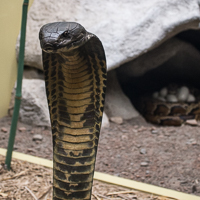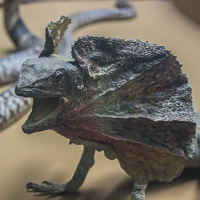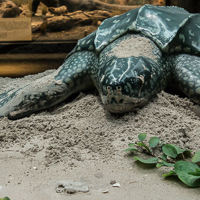
About the Collection
The reptile collection is unfairly bested by other halls in the museum. Snakes and frogs are not as charismatic as noble elephants or cuddly grizzlies. Crocodiles and lizards are terrifying, but they are pale echoes of their dinosaur ancestors upstairs. Still, they are an important piece of the animal kingdom with fascinating biologies adapted to their unique habitats. Come see these terrifying (and occasionally adorable) beasts, large and small, safely preserved behind glass.

What You Will See
Anything not cute enough for mammals or terrifying enough to be a dinosaur ends up here. There is a lot to see in this small hall: huge alligators, tragic tortises, fascinating toads and snakes in their wide variety. Some specimens are full-skined, lifelike recreations and other exhibits focus on the unique skeletal structures of snakes, turtles and lizards. Find your favorite, learn something new and be a little squemish in this hall full of the littlest dinosaurs.

Why You Should Go
The museum strives to provide a comprehensive overview of the animal kingdom (skipping the impossibility of the insect world). This gallery is the last piece and is best apprecaited as a foil to the larger collections. While perhaps you do not need to begin or end your visit here, stop by after seeing the dinosaurs to complete the picture. Or to contrast these creatures with the birds or mammals. It may not have the iconic installations that the mammals, fish or dinosaurs do, but there are highlights to be seen, especially the tragic Galopogos Tortoise.




